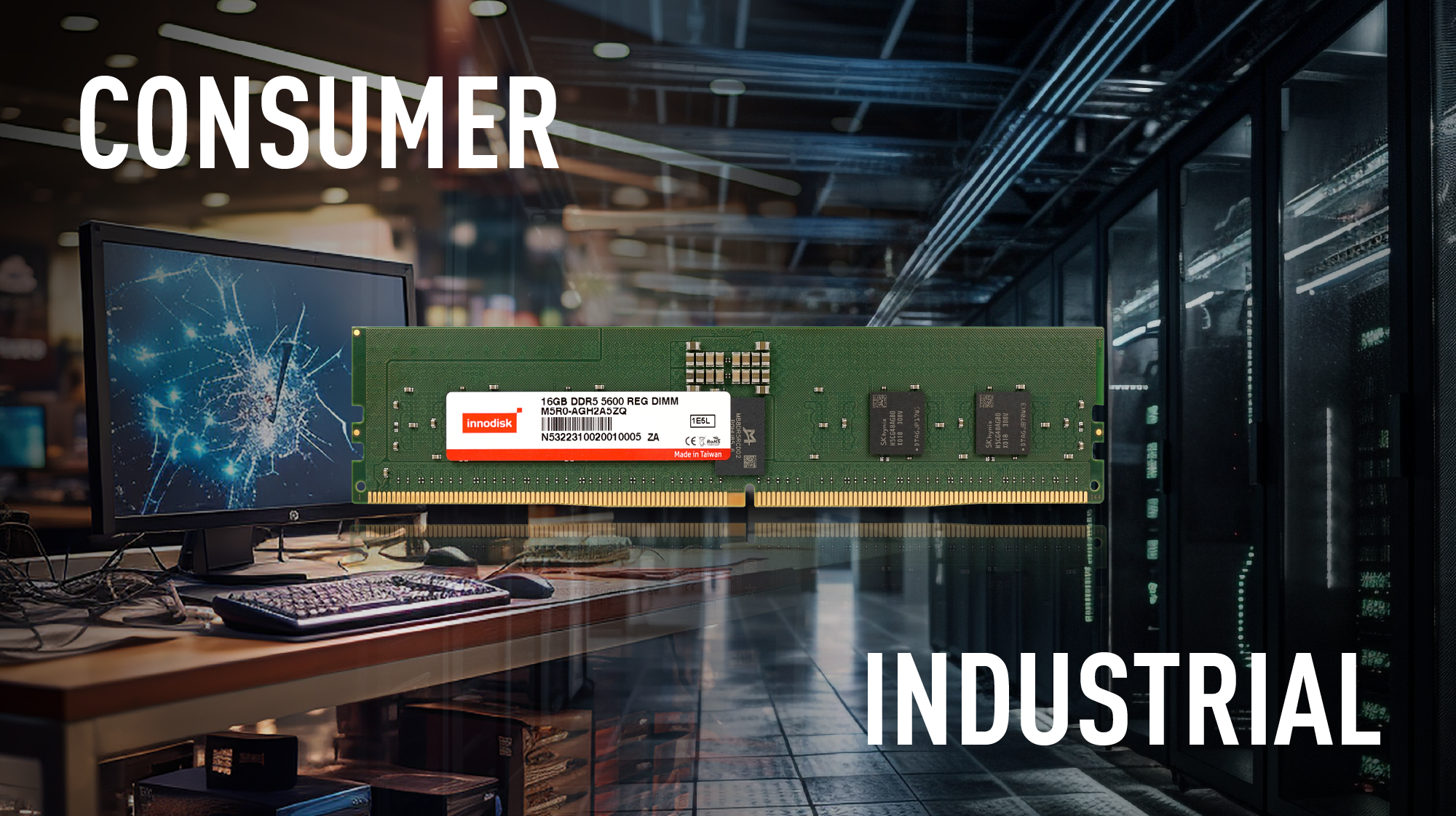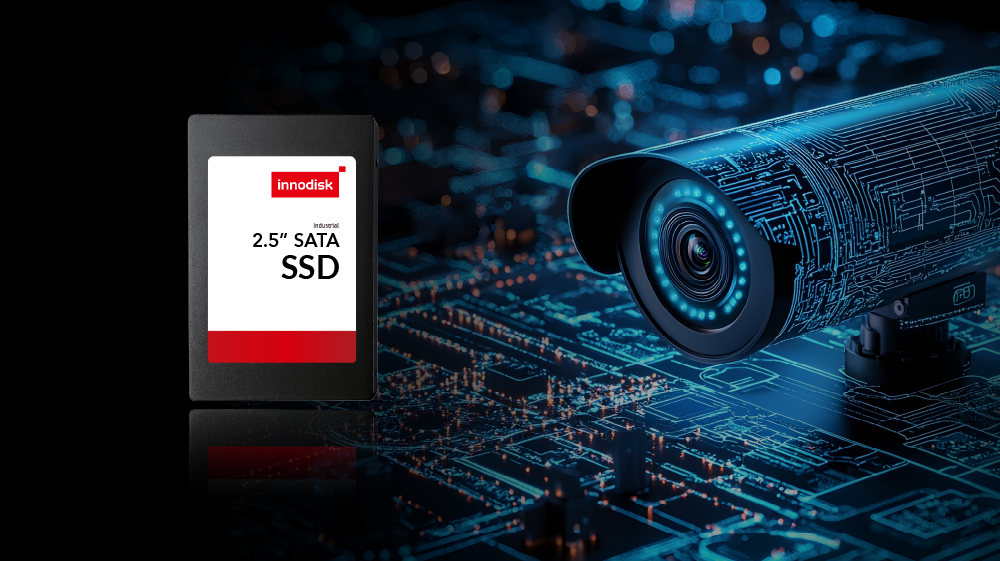6 Ways Consumer DRAM Falls Short of Industrial Applications

Consumer DRAM is widely accessible, and can often be found for a good price. However, these surface level benefits hide the true dangers and shortcomings of consumer DRAM for industrial applications. In this article we will explore the differences between consumer and industrial DRAM, and bring to light the risks of not using the right DRAM for the job.
The Importance of Fixed BOMs
Consumer DRAM modules do not have a fixed BOM (bill of materials); this means that the materials used in the modules can, and often do change without notice to the customer, all while using the same model number. A customer might order two DIMMs in January for testing, and five hundred more in March for production, but there is no guarantee that the modules ordered in January contain the same materials as the ones ordered in March. Even the slightest change in BOM can severely impact the performance and reliability of DRAM modules, which is unacceptable for industrial system integrators who require consistency.
Industrial DRAM modules, such as those manufactured by Innodisk come with a fixed BOM. This means that the materials used to create the DIMMs do not change, and therefore you can continue ordering the same model number over multiple years, and you are guaranteed to receive DRAM modules created with the same materials, even down to the label! This consistency in materials results in consistent performance and reliability for customers.
Strict Testing for Tough Environments
DRAM is usually very reliable, and for this reason, the tests that consumer DRAM modules are put through before being shipped to the customer are limited. However, industrial customers put far more strain on their modules, and therefore any weaknesses in the modules show up far more easily. To put it simply, consumer DRAM doesn’t usually last as long as it is expected to when it is used in industrial applications, as it is not designed to do so, or tested to ensure ruggedness and reliability.
Industrial DRAM modules are tested thoroughly to ensure they can withstand the tough situations that industrial applications will put them through. Innodisk DRAM modules go through twelve tests during their pilot run, including: temperature testing, humidity testing, vibration testing, package drop testing, warm boot testing, power ON/OFF testing, sulfuration testing, PCB bend testing, thermal shock testing, gold finger insertion and extraction testing, and frequency compatibility testing.
Guaranteeing IC Quality
Not all DRAM IC is created equally. During the DRAM IC manufacturing process, DRAM IC is sorted into different IC grades, based on how many of the manufacturer’s tests are passed. For example, uTT grade IC passes some of the tests, eTT grade IC passes most of the tests, and original IC passes all the tests. As an industrial system integrator, you want your DRAM modules to use IC that is of the highest of quality, and consumer DRAM does not meet these requirements. Consumer DRAM modules frequently use sub-par DRAM IC, such as eTT and uTT, and in some cases even downgrade IC, which is the worst grade of DRAM IC, and is likely to cause significant issues for industrial system integrators. Innodisk only uses original IC in all its DRAM modules, guaranteeing the highest quality and reliability for customers.
Protection Against Sulfuration
Sulfur contamination can severely damage unprotected memory modules. The sulfur reacts with the silver found in the DRAM resistors, slowly corroding until conductivity is lost! Other than industries where sulfur is a known threat, such as mining and petrochemical facilities, sulfur corrosion can also be a slow-working and unaccounted risk factor for data centers, servers and other installations. Consumer DRAM modules do not typically have any protection against sulfuration.
Industrial DRAM modules often feature anti sulfuration; the resistors of these anti-sulfuration DRAM modules are covered with a protective layer. This layer safeguards the silver from any harmful substances from the surrounding environment. All Innodisk DDR4 and DDR5 DRAM modules offer anti-sulfuration for no additional or added cost.
Longevity Support for Legacy DRAM
Medical and transportation applications still use legacy DRAM modules, such as DDR1, DDR2 and DDR3. These applications, which don’t require high performance, or large capacities, but must meet strict longevity requirements and have a fixed price over time rely on older DRAM types to meet budgetary, support and zero down time requirements. Many consumer DRAM module manufacturers no longer offer legacy DRAM modules, and those that do have little to zero support or longevity guarantees.
Industrial DRAM manufacturers such as Innodisk can offer support for legacy DRAM modules throughout the lifespan of the system they are used in, as well as agree to fixed pricing, which is especially important for government contractors whose budget cannot stand the unstable changes in price of consumer DRAM modules.
24/7 Smart Monitoring
With consumer DRAM modules, it is hard to monitor the health and performance of modules. Lack of monitoring capabilities is fine for consumers, many of whom don’t even know what kind of DRAM is in their system, but it is a big problem for industrial system integrators who must have up-to-date information at the tip of their fingertips.
Industrial DRAM is usually ready for use with monitoring solutions out of the box. Innodisk DRAM is designed to be used with the iSMART and iCAP remote monitoring and management solutions out of the box.
iSMART is an Innodisk-exclusive software tool designed to simplify information and provide an easy-to-read interface accessible for all users. iSMART provides users with full access to all S.M.A.R.T.-related data and enables users to monitor additional parameters through a simple and user-friendly software interface.
iCAP, the Innodisk Cloud Administration Platform, is a browser-accessed management platform that allows you to monitor the status of solid-state drives (SSDs), memory, and other components in edge devices. iCAP accomplishes this by gathering data from all connected devices and storing it on a central server, either in the cloud or on one’s intranet. From there, the data is easily accessible from smart phones, tablets, and laptops.
Further Reading

